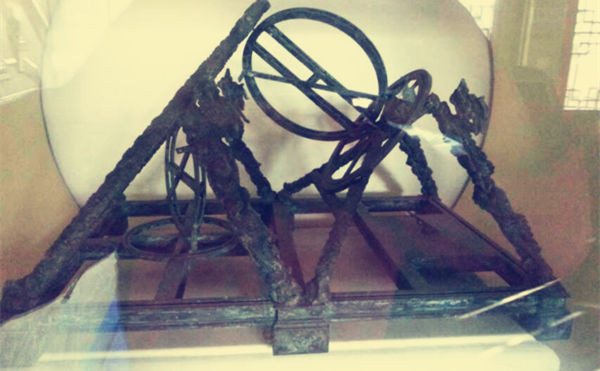This museum looks like a turreted tower set in Beijing's ancient city walls. It is located on the southeast corner of Jianguomen Street in Beijing. When it was originally built, in the Guo Shoujing (1231-1316) period of the Yuan dynasty, it had a slightly different name but the same intent: to explore the heavens. Over the course of more than five hundred years, through Ming and Qing dynasties and on into the period after the Xinhai Revolution (1911), this location has been used to observe phenomena of the skies. This is the longest historical record of using any such observatory for so long. At present, eight large bronze implements for viewing the heavens are arrayed on the top of the museum's tower; these date from the Qing dynasty. Under the tower is a hall built between the years 1442 and 1446, during the Ming dynasty. To the east and west are subsidiary rooms and other ancient structures.

The observatory's platform, rebuilt in recent years, is 17 meters high and holds exhibition rooms inside. If you walk through the door with the three characters for the observatory carved above it, you find a three-level exhibition space devoted to China's ancient astronomical accomplishments. A stone-carved star map from Suzhou is exhibited here, as well as the ceiling astronomical map from Longfu Temple, two rare treasures. The former was done in the Song dynasty in the year 1247. It depicts 1,434 stars and is recognized as one of the best early star maps in the world. The latter was accomplished in the Ming period, but from the characters carved on the side of the map one can see that the underlying information already existed in the Tang dynasty. In the courtyard of the museum, surrounded by ancient trees, the hall and east gate areas exhibit early astronomical instruments and the methods and changes in making them. In the western chamber some 150 early methods of calculating calendars in China are exhibited. Archaic as well as more recent astronomical water clocks and contemporary astronomical clocks are exhibited. Eight bronze astronomical instruments are arranged on the top of the platform, as per the Qing-dynasty emperor Qianlong's instructions.
Address: No.2 Dong Biaobei Hutong, Jianguomen, Dongcheng District
Source: chinamuseums.com



